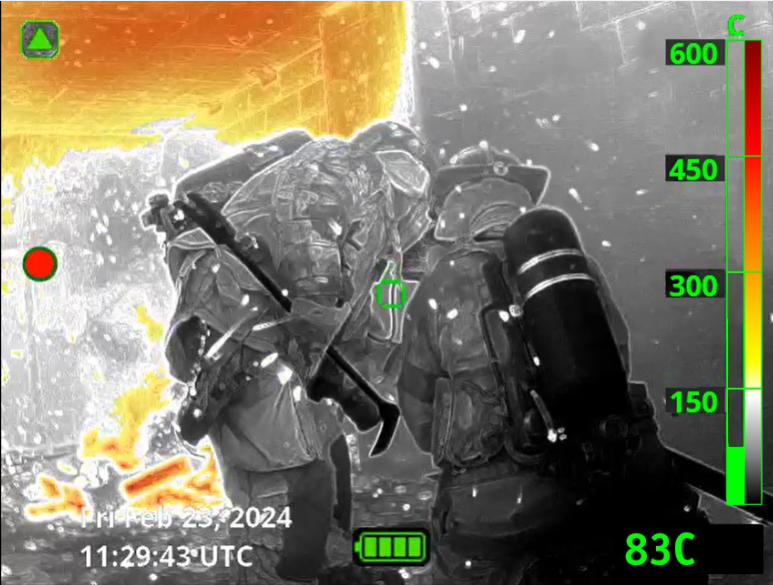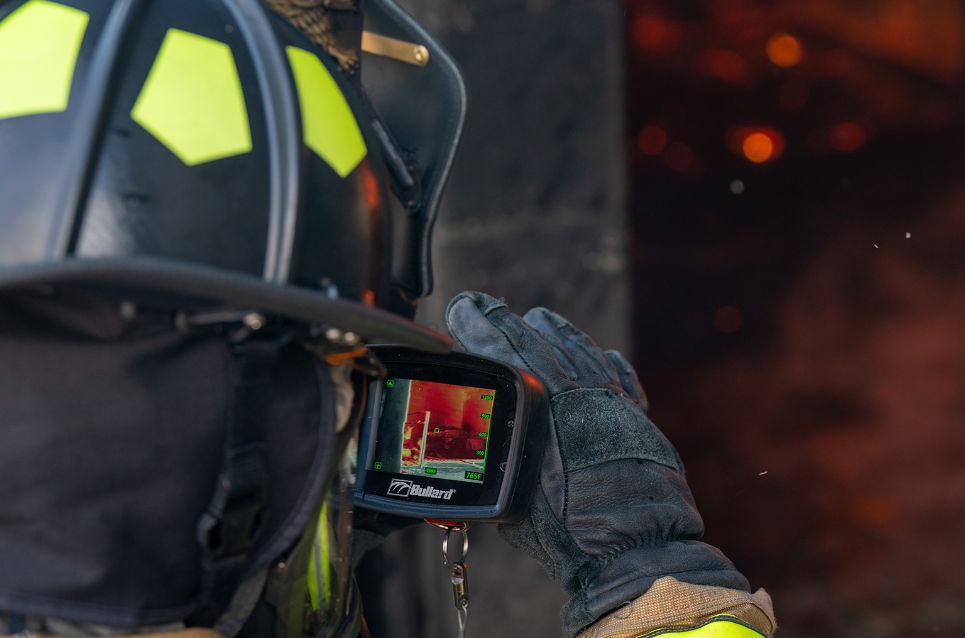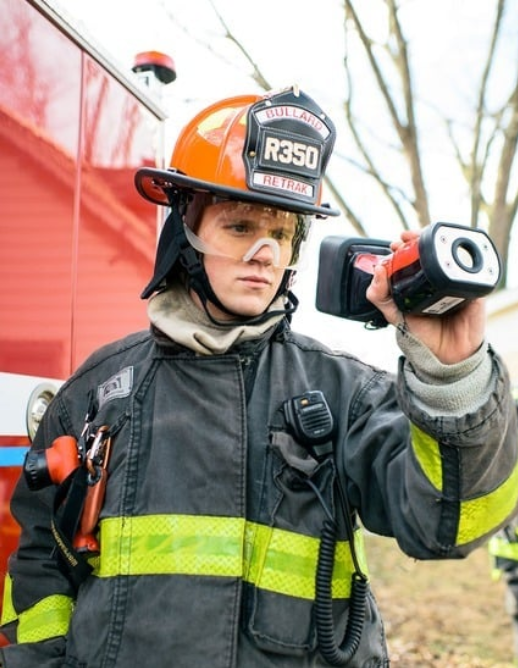Recognizing flow patterns is essential for firefighter safety and effective decision-making on the fireground. Thermal imagers enable firefighters to visualize heat and smoke movement, offering critical insights that improve situational awareness. Advanced thermal imagers equipped with specialized features can enhance this capability, making them indispensable tools for identifying fire behavior and adapting strategies in real-time.
How Thermal Imagers Visualize Flow Patterns
Thermal imagers detect infrared radiation, converting it into visual representations of heat sources and movement. These images help firefighters interpret smoke and heat flow, which are crucial for understanding fire behavior and predicting its progression.
Key features that enhance flow pattern recognition include:
- High Thermal Sensitivity-Thermal imagers with the ability to detect subtle temperature differences are crucial for identifying faint heat trails and flow patterns in low-visibility environments, such as smoke-filled rooms. This sensitivity allows firefighters to monitor how heat travels and anticipate potential fire spread.
- Effective Heat Visualization-Features that highlight high-temperature zones with color overlays or intensity levels help distinguish heat layers and gradients. These visual cues enable firefighters to quickly identify critical flow paths and assess fire spread in dynamic environments.
- Wide and Balanced Fields of View-An ideal field of view (FOV) for firefighters balances wide coverage with image clarity, providing both expansive scene awareness and the ability to focus on key details. Devices with a well-proportioned FOV provide the flexibility to assess flow patterns in both large, open areas and confined spaces.
- Fast Refresh Rates-A refresh rate of 60Hz or higher delivers smooth, real-time tracking of heat and smoke movement. This reduces lag, which can help firefighters react promptly to evolving conditions.
- Enhanced Image Clarity with Edge Detection-Edge detection technology emphasizes the outlines of objects and flow paths, making it easier to distinguish between heat sources, smoke layers, and surrounding structures. This clarity enhances situational awareness, especially in complex environments.

How to Evaluate a Thermal Imager for Flow Patterns
When choosing a thermal imager, prioritize features that enhance its ability to display flow patterns accurately and in real-time.
1. Resolution and Sensitivity
- What to Look For: High resolution (e.g., 320×240 or 640×480 pixels) and sensitivity below 50 mK. These features can help ensure detailed, clear visuals even in subtle heat scenarios.
- Example Test: During a training exercise in a smoke-filled room, use the imager to spot faint heat signatures, such as a hot air trail escaping through a doorway or heat seeping from cracks in a wall. Higher resolution will make these subtle patterns stand out.
2. Image Enhancement Features
- What to Look For: Automatic contrast adjustment, edge sharpening, and digital noise reduction to enhance image clarity and make flow patterns more apparent.
- Example Test: Use the imager in a mixed environment where some areas are very hot (e.g., burning furniture) and others cooler (e.g., a wall or ceiling). Observe how well the device differentiates between these elements and highlights the flow of heat or smoke between them.
3. Real-Time Responsiveness
- What to Look For: A refresh rate of 60Hz or higher can help ensure smooth, real-time tracking of heat and smoke movement.
- Example Test: Sweep the imager across a fast-evolving fire, such as flames moving up a wall or smoke traveling through a vent. A device with a good refresh rate will display these changes without lag, allowing you to follow the movement seamlessly.
4. Field of View (FOV)
- What to Look For: A wide and balanced FOV of around 50° horizontal to provide a broad perspective without sacrificing detail.
- Example Test: In a training scenario, stand in the middle of a large room or a narrow hallway and observe how much of the scene the imager captures. A well-balanced FOV will allow you to see a wide area while still clearly identifying critical details like heat sources or flow patterns in the periphery.
5. Ergonomic and User-Friendly Design
- What to Look For: Large, easy-to-use buttons for gloved hands, a clear display visible through SCBA masks, and a lightweight, ergonomic design.
- Example Test: While wearing full turnout gear, including gloves and an SCBA mask, operate the imager’s controls. Assess how quickly you can toggle between features or make adjustments in a high-stress situation without fumbling or misinterpreting the display.
6. Environmental Durability
- What to Look For: High heat tolerance, NFPA 1801 certification, and an IP rating of IP67 or higher for water and dust resistance.
- Example Test: During a live-burn scenario, expose the imager to high heat by holding it close to a fire source for an extended period. Then submerge it in water or spray it down to simulate fireground conditions. Verify that the device continues to function without fogging or overheating.

Training: The Key to Effective Flow Pattern Recognition
Even the most advanced thermal imagers require proper training to maximize their potential. Incorporating flow pattern recognition into your training regimen is essential for operational success.
Scenario-Based Training
- Simulate real-world conditions, such as live burns or smoke-filled training structures, to practice identifying heat and smoke movement.
- Include scenarios that challenge firefighters to recognize and adapt to changing flow paths, reinforcing critical thinking and decision-making.
Focus on Interpretation
- Train firefighters to differentiate between key elements, such as heat sources, smoke layering, and ventilation flow, using thermal imagery.
- Emphasize how flow patterns influence ventilation strategies, fire attack, and search-and-rescue operations.
Advanced Drills
- Use controlled environments to test how different thermal imagers perform under variable conditions, such as rapid temperature changes or obstructions.
- Compare how features like enhanced color modes and edge detection improve visibility and decision-making.
Conclusion
Recognizing flow patterns is a fundamental skill for firefighters, which can help enable safer and more effective operations. Thermal imagers are invaluable tools for visualizing these patterns, but their effectiveness relies on selecting the right features and helping to ensure proper training.
To explore advanced thermal imagers or schedule a demonstration, visit www.bullard.com
Equip your team with the tools and skills they need to better understand flow pattern recognition.



